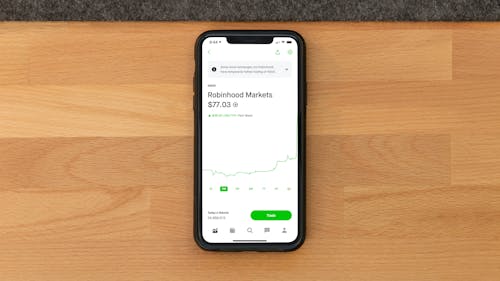How to Choose the Right Trading App for You How to Choose the Right Trading App for You Choosing the right trading app can make a big difference in your trading experience. Here are some key factors to consider when selecting the best trading app for your needs:
1. User Interface (UI) and Ease of Use
- Simplicity: The app should be easy to navigate, with clear charts, accessible features, and a straightforward layout.
- Customization: Look for apps that allow you to customize dashboards or set up personalized alerts.
- Device Compatibility: Ensure the app works smoothly across multiple devices (smartphones, tablets, desktop).

2. Fees and Commission Structure
- Trading Fees: Compare the commissions per trade, as some apps offer commission-free trading, while others charge per trade.
- Hidden Fees: Watch for other fees like account maintenance, withdrawal, or inactivity fees that might reduce your profitability.
- Account Minimums: Some platforms require minimum deposits or account balances to access certain features.
3. Available Assets and Markets
- Variety of Assets: Make sure the app offers the type of trading you want (stocks, options, forex, ETFs, cryptocurrencies, etc.).
- Global Access: If you’re interested in international trading, choose an app with access to global markets.
- Liquidity: Ensure the app provides liquidity for your chosen assets, so you can trade efficiently.
4. Security Features
- Encryption: The app should use strong encryption and security protocols to protect your personal and financial data.
- Two-Factor Authentication (2FA): This added layer of security helps safeguard your account from unauthorized access.
- Regulation: Check that the app is regulated by a recognized authority in the country where you trade (e.g., SEC, FCA).

5. Research and Tools
- Market Insights: The app should provide real-time data, news, and detailed analysis to help inform your decisions.
- Technical Analysis Tools: Look for apps with advanced charting features, technical indicators, and research tools to help you analyze potential trades.
- Education: If you’re new to trading, apps with educational resources, tutorials, and trading guides are helpful.
6. Customer Support
- Availability: Ensure there is 24/7 support or adequate working hours for assistance.
- Multiple Channels: Check if the app provides customer support through live chat, email, phone, or social media.
- Responsiveness: Look for reviews about the quality and speed of customer service.
7. Account Types and Features
- Margin Trading and Leverage: If you want to trade on margin or use leverage, check if the app offers these features and what the terms are.
- Investment Accounts: Some apps offer various account types, such as retirement accounts or tax-advantaged accounts.
- Automated Trading: Look for apps that allow automated trading features or tools for setting up alerts and stop-loss orders.

8. Mobile Experience
- Performance on Mobile: Make sure the mobile app is responsive and works just as well as the desktop version.
- Features on the Go: The app should allow you to monitor your trades, place orders, and access your account anywhere, anytime.
9. Reviews and Reputation
- User Reviews: Look at ratings and reviews on app stores or third-party review sites to gauge how other traders feel about the app.
- Reputation: Check how long the app has been in operation and whether it has a history of reliability and trustworthiness.

10. Demo or Trial Account
- Practice Trading: Many apps offer demo accounts where you can practice trading without risking real money. This is especially helpful for beginners.
- Trial Period: Some apps offer trial periods for premium features, allowing you to test the app’s advanced tools before committing.